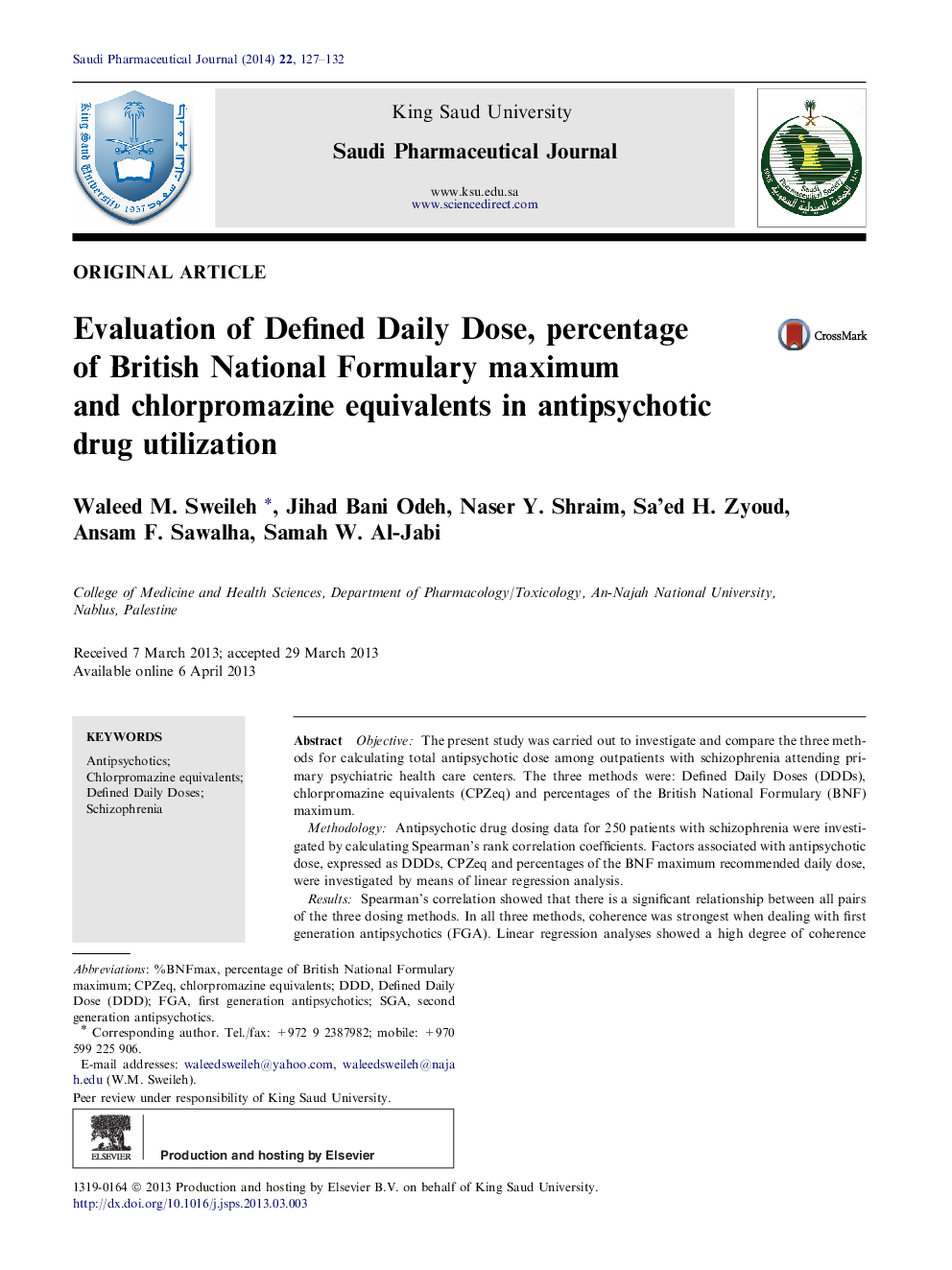| Article ID | Journal | Published Year | Pages | File Type |
|---|---|---|---|---|
| 2509428 | Saudi Pharmaceutical Journal | 2014 | 6 Pages |
ObjectiveThe present study was carried out to investigate and compare the three methods for calculating total antipsychotic dose among outpatients with schizophrenia attending primary psychiatric health care centers. The three methods were: Defined Daily Doses (DDDs), chlorpromazine equivalents (CPZeq) and percentages of the British National Formulary (BNF) maximum.MethodologyAntipsychotic drug dosing data for 250 patients with schizophrenia were investigated by calculating Spearman’s rank correlation coefficients. Factors associated with antipsychotic dose, expressed as DDDs, CPZeq and percentages of the BNF maximum recommended daily dose, were investigated by means of linear regression analysis.ResultsSpearman’s correlation showed that there is a significant relationship between all pairs of the three dosing methods. In all three methods, coherence was strongest when dealing with first generation antipsychotics (FGA). Linear regression analyses showed a high degree of coherence between antipsychotic doses expressed as DDDs, CPZeq and percentages of the BNF maximum recommended daily dose.ConclusionAll three tested methods are reliable and coherent for calculating antipsychotic dosing.
